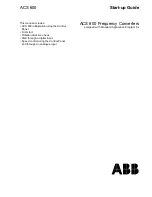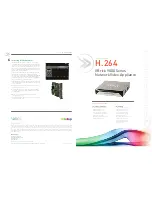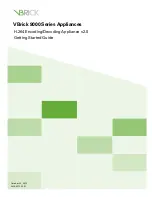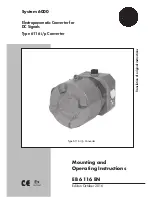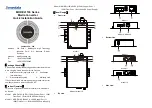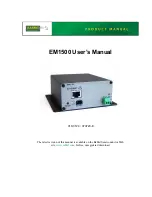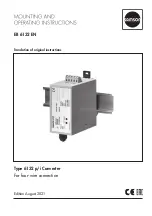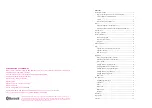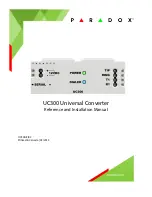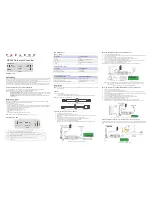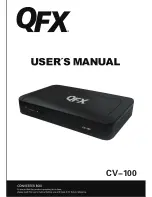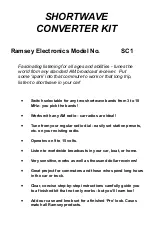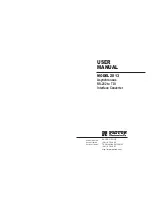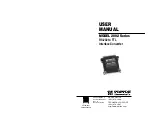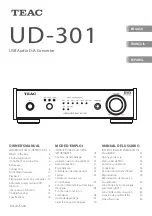
3.2 TYPICAL APPLICATIONS
The Model 2089 is commonly used in five types of applications:
4-wire/full duplex/point-to-point, 4-wire/half duplex/point-to-point,
2-wire/half duplex/point-to-point, 4-wire/multipoint and 2-wire/multipoint.
The switch settings
generally
needed to configure the Model 1008 for
these applications are shown in the table below.
Note:
Do not change
switch settings until you have
carefully
read
Section 3.1.
8
S1-1: Rcv Impedance
ON
ON
ON
Master - ON
Slaves - OFF
Last Slave - ON
S1-2: 2-wire/4-wire
OFF
OFF
ON
OFF
ON
S1-3: 2-wire/4-wire
OFF
OFF
ON
OFF
ON
S1-4: Echo
OFF
OFF
OFF
OFF
OFF
S2-1: Carrier Control
OFF
ON
ON
Master-OFF
ON
Slaves-ON
S2-2: RTS/CTS Delay
ON
ON
ON
OFF
ON
S2-3: “Xmt Off” Imp.
OFF
OFF
OFF
OFF
OFF
S2-4: “Xmt Off” Imp.
OFF
OFF
OFF
OFF
OFF
TYPICAL MODEL 2089 APPLICATIONS
Point-to-Point
Switch
Settings
Multi-point
4W
2W
4W
2W
4W HDX
4.0 INSTALLATION
Once the Model 2089 is properly configured, it is ready to connect
to your system. This section tells you how to properly connect the
Model 2089 to the twisted pair and EIA/TIA-574 interfaces, and how to
operate the Model 2089.
4.1 TWISTED PAIR CONNECTION
The Model 2089 supports 2-wire or 4-wire communication between
two or more EIA/TIA-574 devices at data rates to 115.2 Kbps. There
are two essential requirements for installing the Model 2089:
1.
These units work in
pairs.
Therefore, you must have one Model
2089 at each end of a two twisted pair interface. In multipoint
environments, there must be one Model 2089 at the EIA/TIA-574
host and one at each EIA/TIA-574 terminal.
2.
To function properly, the Model 2089 needs two twisted pairs of
metallic wire. These pairs must be
unconditioned
dry metallic
wire, between 19 and 26 AWG (the higher number gauges may
limit distance). Standard dial-up telephone circuits, or leased
circuits that run through signal equalization equipment, are
not
acceptable
.
For your convenience, the Model 2089 is available with several
different twisted pair interfaces: RJ-11 jack, RJ-45 jack, terminal blocks
with strain relief and dual modular jacks (for multipoint daisy-chaining).
4.1.1 TWISTED PAIR CONNECTION USING TERMINAL BLOCKS
If your application requires you to connect one or two pairs of bare
wires to the Model 2089, you will need to open the case to access the
terminal blocks. The following instructions will tell you how to open the
case, connect the bare wires to the terminal blocks and fasten the
strain relief collar in place so the wires won't pull loose.
1. You should already have the case open for the configuration
procedure. If not, see
Section 3.1
.
2. Strip the outer insulation from the twisted pair(s) about one inch
from the end.
9





















